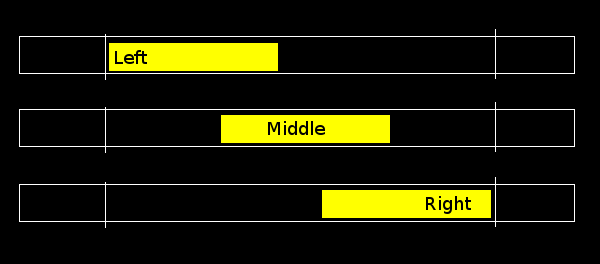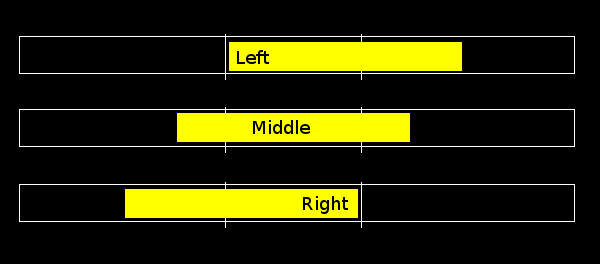If a train schedule demands a stop at a station, the Preferred Stop attribute determines where a train should stop within that block or station track. This depends on the facilities. For instance I n passenger stations you want the trains to stop close to where people have access to the platform (staircase etc).
Blocks may be much longer than the area where passengers can board a train, or loads can be exchanged, but it is also possible that the block is shorter than the trains stopping there.
The following values are available:
-
middle The train should stop so that the middle of the train is in the middle of the block
-
left_end The train should stop so that the left end of the train is near the left end inside the block
-
right_end The train should stop so that the right end of the train is near the right end inside the block
-
far_end The train should stop so that the head of the train is just short of the end of the block (1)
-
near_end The train should stop so that the tail of the train is just inside at the beginning of the block (1)
(1) This attribute sets the preferred stop location depending on the direction of the train is traveling, rather than an absolute location
The location of the trains within a block for a stop to be valid is shown below (left, middle and right):

If the train is longer than the block the above diagram changes as follows:

Please note:
-
For “left_end”, “middle” or “right_end” it is irrelevant which direction the train travels, or even if it is a reverse movement. On the other hand, the “far_end” and “near_end” attributes take the direction into account: If a train comes from the left, “far_end” is the same as “right_end” and “near_end” is the same as “left_end”. For a train coming from the right it is the other way around.
-
To make a “valid” stop a train must be located as indicated in the diagrams – it is not sufficient that the trains is somewhere located in the block. This is important if the block is not long enough to hold the entire train. For instance, if in the “middle” situation a train comes to a stop because the exit signal of the block is not cleared and therefore cannot enter the next block, it is not accepted as a properly executed stop. It is also relevant even if a block is longer than the train in cases that another train is already located in the block (for special consideration of train merges see the note here)
-
If you order a train to stop in a block, and reverse right away for switching purpose, CTC creates a temporary stop with the attribute “near_end”. This way a train doesn’t need to go all the way to the end of the block, reverse there, and go all the way back just for a simple switching move
If you need a more sophisticated way to manage preferred stops you may consider a superblock, where the actual station track is a shorter section of a lengthy block.